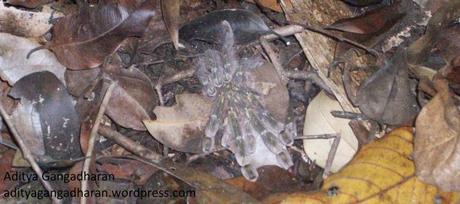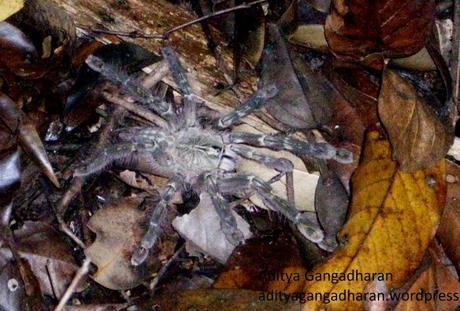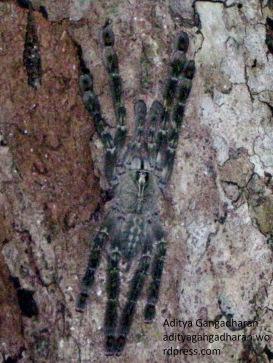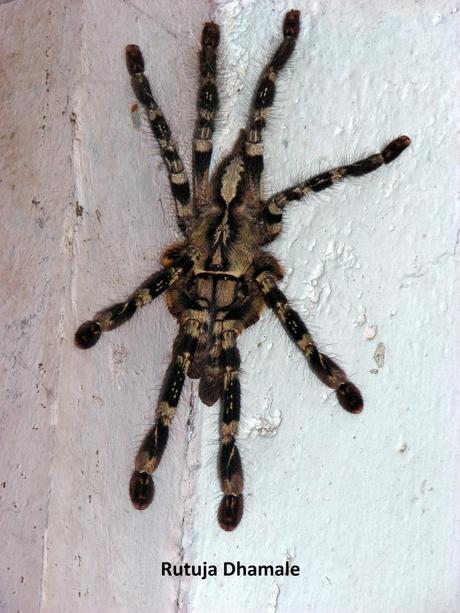One of the questionable perks of fieldwork in the Western Ghats is having giant tarantulas drop down on you from the trees above.
Now those who know me will tell you that I am not a fan of big spiders, especially not when they are bigger than my outstretched palm. But I do have a morbid fascination for tarantulas. Theraphosidae, meaning ‘tiger spider’, is their scientific family name – which corresponds exactly to their Malayalam name, Kaduva chelanthi. Not because they are highly charismatic megafauna whose roars shake the forest, but because of their bite. In the words of someone who has clearly experienced this, “its bite is intensely painful and usually wound takes many days to heal if not treated properly”. The malampandaram tribals, who live in the area where I work, say that if you are bitten, the body part may have to be amputated if not treated because the venom decays the flesh (they compare it to viper bites). Fun.
The first time I saw a full size one (a Poecilotheria species) was in the field one day, when it fell off its perch on a tree above and landed on the shoulder of Chandran, the field assistant walking directly in front of me. He quickly brushed it off, directly in my direction. I jumped to the side, straight into a cane thicket (and those who know how painful cane thorns are can sympathize with me). The confused tarantula at first bunched itself up:

Then it started walking around, sending everyone scurrying for cover….

…and then climbed up the closest tree and sat on the trunk in its classic position – with the front legs and back legs positioned longitudinally to the body.

Despite their scary appearance and worse reputation, these guys don’t really get aggressive unless provoked. From an evolutionary perspective, venom is a precious resource because its production takes a lot of energy. So ideally the spider should minimize its use. If you take the spider that I described above, it had every reason to be frightened and get aggressive, because it fell off its secure tree and landed in the midst of a bunch of shouting people. But it didn’t – it just wanted to escape and get back on to its tree.
In fact, a tarantula (fondly named ‘Wolfie’) was an honoured guest at one of our field stations. He apparently just sat quietly in the bathroom, minding his own business, completely oblivious to his new found celebrity status among the field ecologists, treating the constant stream of admirers and the flash of cameras with the disdain of a seasoned movie star. After a week or so, he left as quietly as he had come (photo credit: Rutuja Dhamale).

And while we are on the subject of arachnids in the bathroom, check out the tailless whip scorpions that were a constant presence in the bathrooms:

Many Poecilotheria species are under severe threat – in fact, the IUCN puts some of them in the same category as tigers in terms of their vulnerability to humans (endangered). They are captured by unscrupulous poachers, to ship to even more unscrupulous buyers in Europe and North America to keep as pets. They also get killed by people when they enter their houses, because of their scary appearance and reputation. Its not an easy life, being a tarantula…
